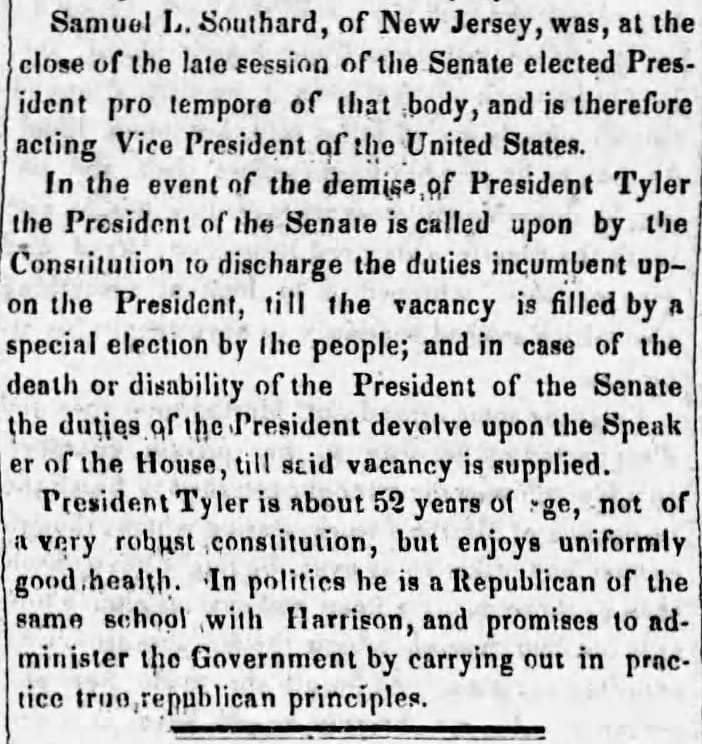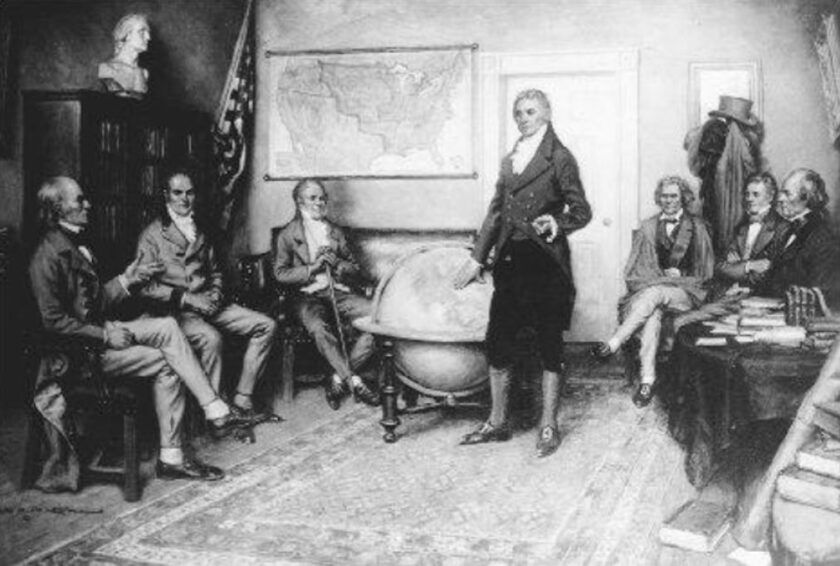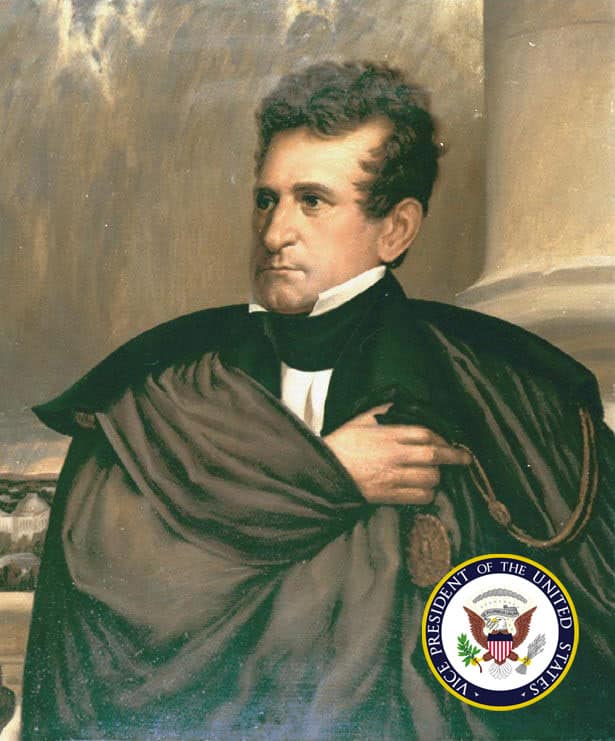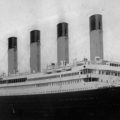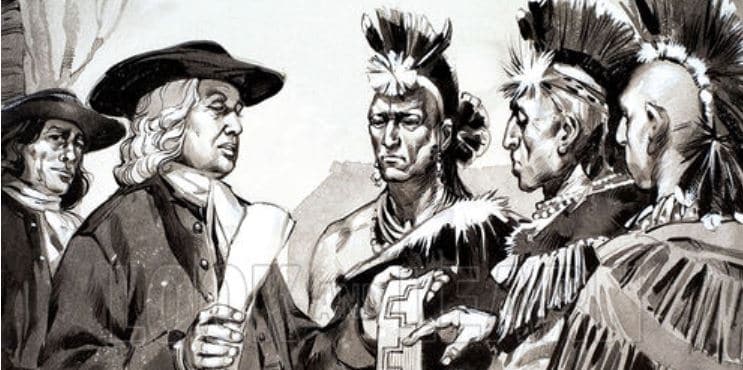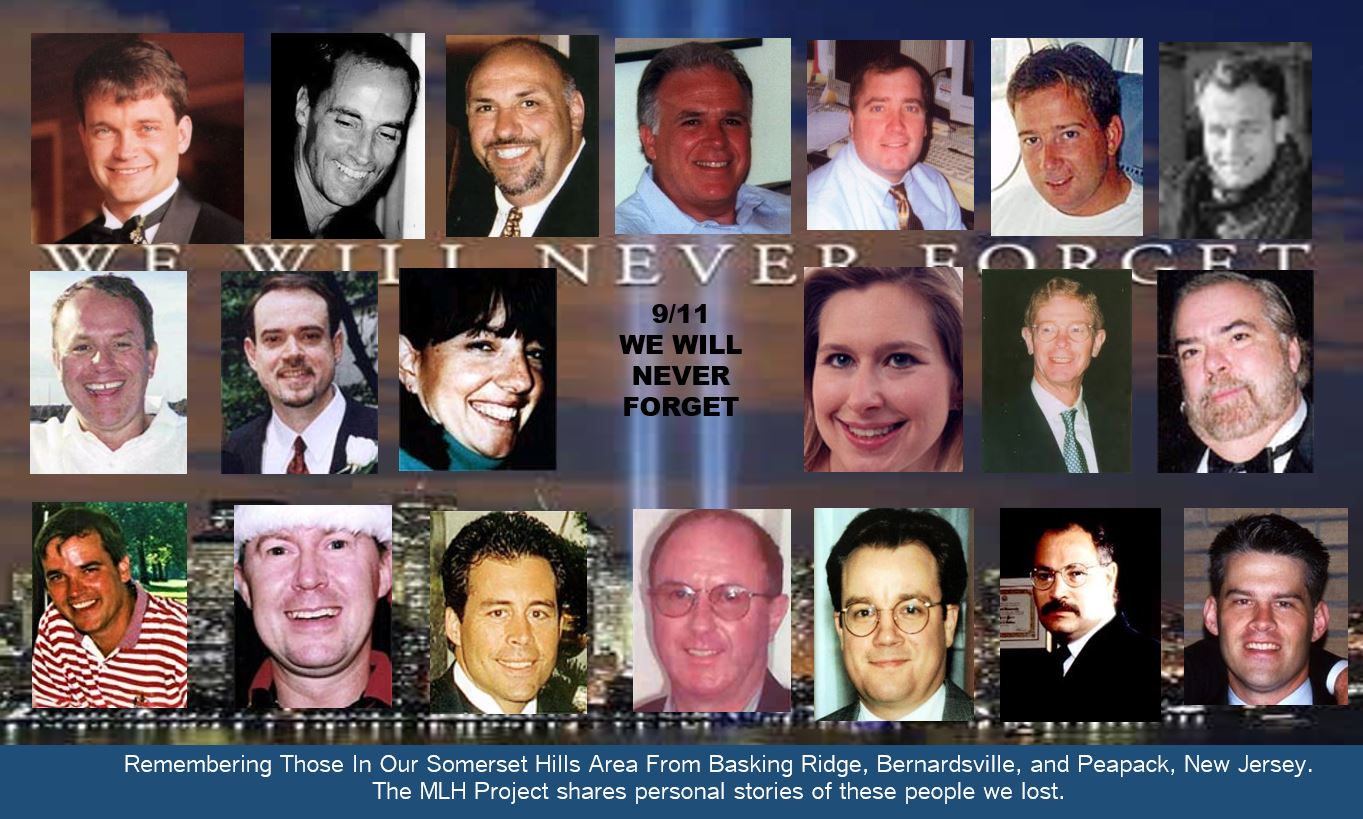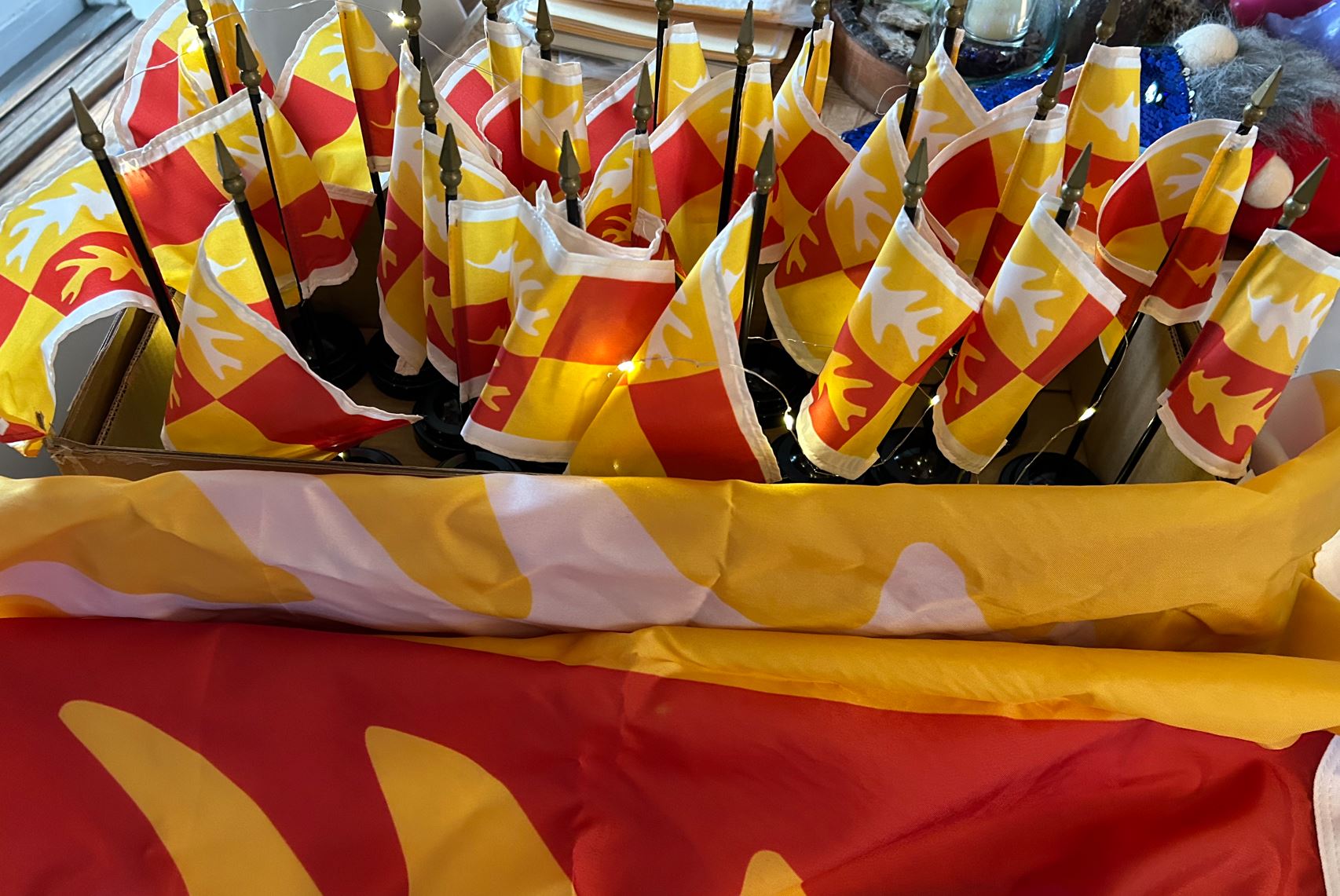PREVIEW RELEASE:
MLHP continues it’s research and will update to a final version at the conclusion of their research as our search now takes us to the Princeton University archives. We are still looking where Abraham Southard settled from around 1750 to about 1769. We feel Abraham landed near Franklin Corners about 1755. Thought is prior to 1755, he and his family might have stayed in the Raritan Bay area near Perth Amboy looking for real estate in Somerset County. We keep digging.
Before we get started, we uncovered something we never knew about Samuel Southard; MLH believes Basking Ridge’s own Samuel Southard was the Vice President of the United States for over a year after the death of President William Henry Harrison in 1841. Was he? Check out the research we’ve uncovered.
Southards Leave New Amsterdam For Basking Ridge
If you live in the Basking Ridge section of Bernards Township you might have passed by Southard Park saying to yourself, “who was that guy?” You might also continue up North Maple avenue to the Ross Farm and the historic Boudinot estate. Our history takes you back to the 18th century where we’re going to tell you a story about a family that migrated from Holland to Hempstead New York. Then the Dutch would leave New Amsterdam for New Jersey. The Mr Local History Project introduces you to the Southard family of Basking Ridge and their Central Jersey settlement.
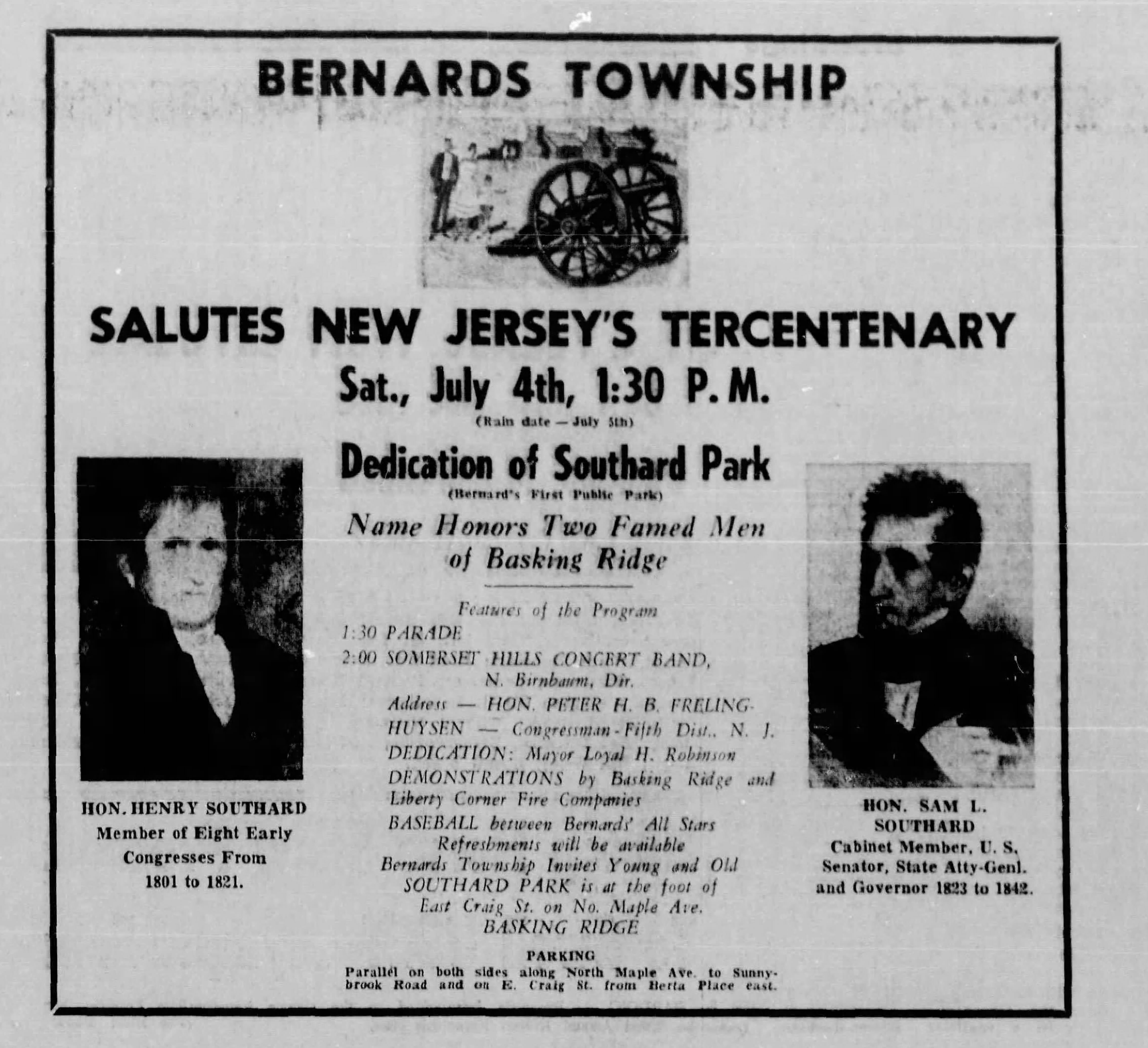
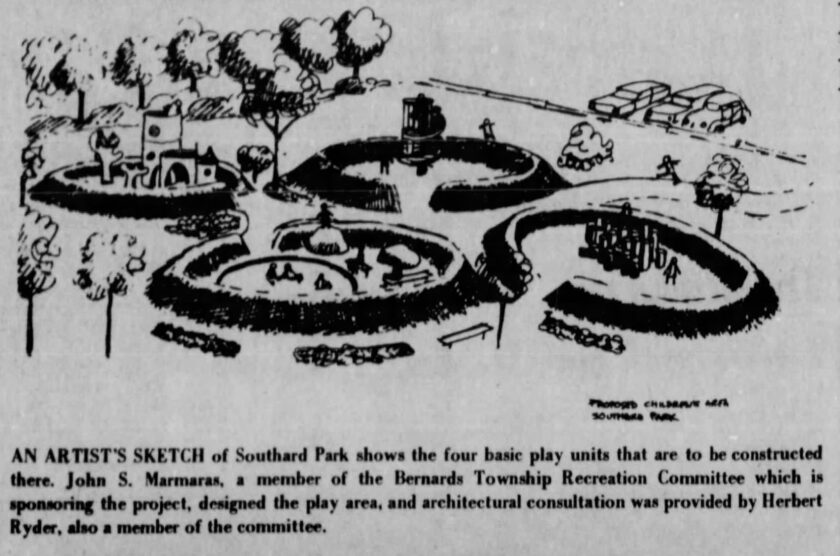
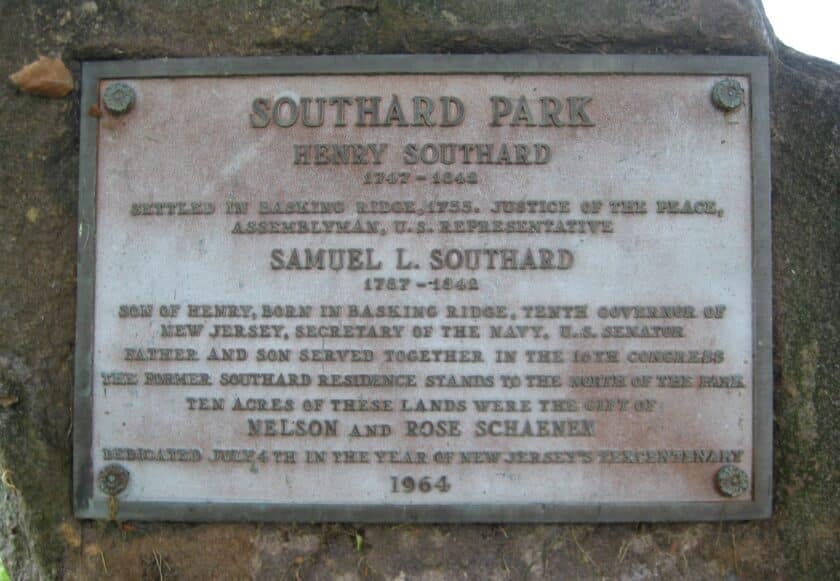
Basking Ridge Royalty
The Southards of Basking Ridge have a wonderful Basking Ridge and New Jersey genealogical history marrying into family names such as Morris, Lewis, Doty, Rickey, McCollum, and more. In Basking Ridge, many streets and properties are dotted throughout the neighborhoods around the Southard farmstead (now known as the Ross Farm) that make you feel like you’re truly in their world.
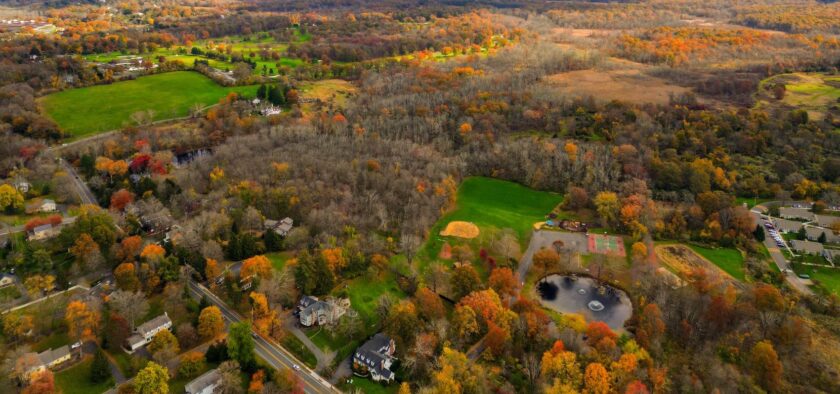
Thomas Southard was the first of this English family in America. They were likely English dissenters who went first to Holland, as he was born there about 1615, possibly in Leyden. During the late 1500s and early 1600s, many English families went to Leyden, Holland to escape the intolerance of the Church of England toward religious dissent. Leyden was then known for cultural freedom.
Thomas settled at Gravesend, where he had inherited a piece of property from an “unmarried uncle Abraham,” where they lived for about 12 years. Gravesend is a neighborhood in the south-central section of the New York City borough of Brooklyn, on the southwestern edge of Long Island.
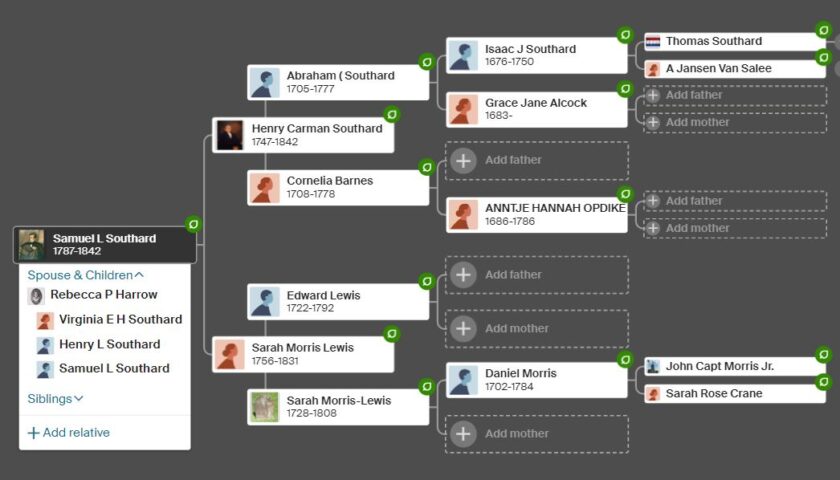
Anthony was of a somewhat higher echelon in life and a man of property on Long Island. His father was Jan Jansen Van Haarlem. Haarlem is a city in Holland and no doubt that district in New York got its name from that Dutch city. “As the sons grew to manhood they found it more difficult to live in Hempstead as they felt more Dutch than English. “In the years before the Revolution, feelings ran high between the American rebels and those loyal to the crown. Their English neighbors insisted they take sides. To escape this, many of the Southards decided to leave Hempstead, some going up the Hudson River and many left for New Jersey.
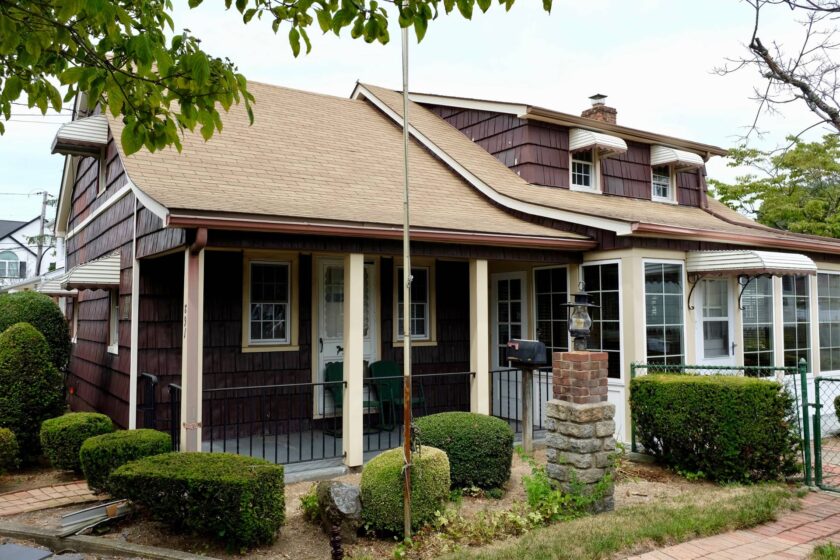
The Southard story in Basking Ridge would begin in the summer of 1751 (some quote 1750) when Thomas Southard’s grandson, Abraham (Absalom) Southard and his wife Cornella (Barentse) Barnes (Cornelia was a daughter of John and Hannah (Barentse) Barnes of Hempstead), as farmers moved from Hempstead, Long Island to Basking Ridge along with their 8 children. Documented in the classic “The Story of an Old Farm p.190, the children were; Amos Southard; Elizabeth Cotter; Isaac Southard; Henry Southard; Charity Blair; Daniel Southard; Richard Southard and Abraham Southard, Jr. . Abraham would become heavily involved in the presbyterian church just down the road after settling in Basking Ridge, New Jersey.
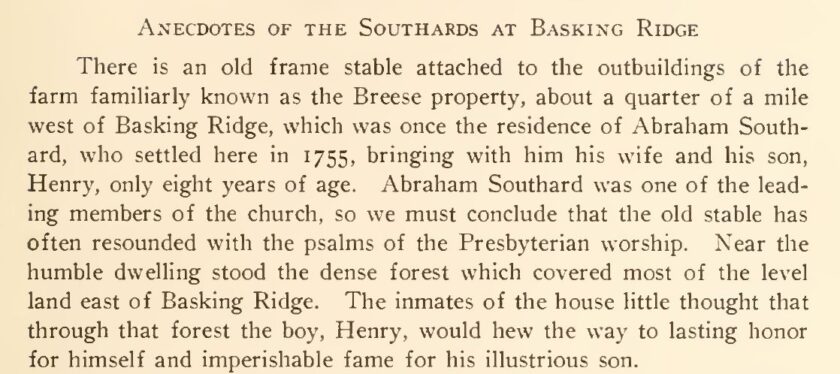
Somerset County Historical Quarterly 1912 v.3
Henry Carman Southard – Farmer & Congressman
Henry Southard was born on October 4, 1747, in Hempstead, Long Island, New York, and was the 9th of 10 children. Moved to Basking Ridge when he was eight, Henry would later become one of Somerset County and New Jersey’s greatest physicians and Jeffersonian-styled legislators. Henry also served in the New Jersey Militia during the Revolutionary War. He was elected to represent 6 different New Jersey Districts in the United States House of Representatives during two separate terms in office (first term from 1801 to 1811, second term from 1815 to 1821). Southard later represented New Jersey’s 3rd District from 1801 to 1803, was an At-Large Representative from 1803 to 1805, and again from 1807 to 1809. Represented the 6th District from 1805 to 1807, and the 5th District from 1809 to 1811. In his second tenure in Congress, he represented the 2nd District from 1817 to 1817, from 1819 to 1821, and the 20th District from 1817 to 1819.
Both Henry and his son Samuel were prominently Involved in final passage of the “Missouri Compromise” which was probably the most important issue of that critical period.
We believe the first house Abraham owned was on today’s North Maple Avenue, just three lots to the north of today’s Southard Park in Basking Ridge, New Jersey. In 1776, the road to Morristown was known as “The Highway.” Henry worked as a local farmhand, working for just $0.30 per day, saving to purchase the famed Boudinot farmstead just to the north one day.
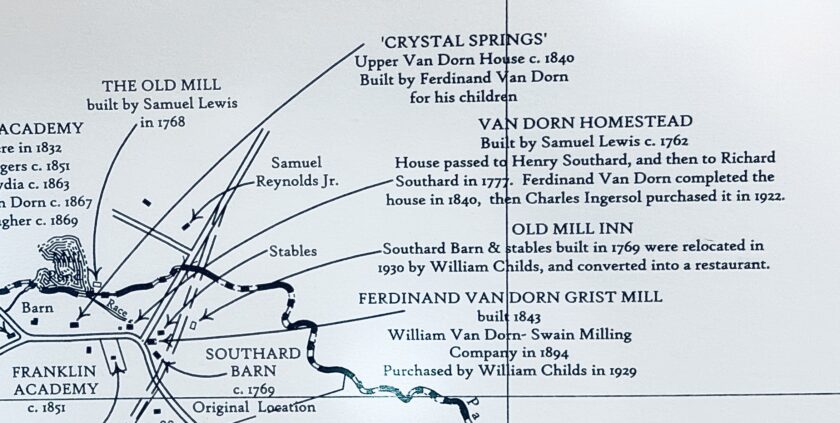
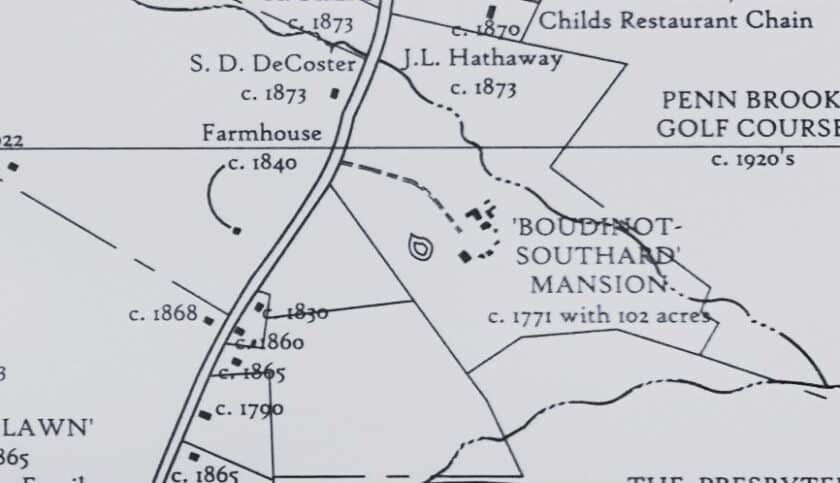
Franklin Corners
The land we’re talking about, called Franklin Corners today, was originally purchased by William Penn in 1717 and sold to John Budd in 1718. Budd’s widow, Sarah Budd Scott, sold the land in the middle of the 18th century to the farmers and millers who settled the area prior to the Revolution. The earliest inhabitants were the Brees, Johnson, Lewis, and Southard families.
Samuel Lewis, a miller from the Franklin Corners District in Bernards Township, built a water-powered grist mill and a barn on the Passaic River on land originally acquired from William Penn. Henry Southard purchased the property from Samuel Lewis. Then in 1777, Henry sold the property to his brother Richard. The small wooden mill supplied desperately needed flour, meal, and feed to the Continental Army encampment at Jockey Hollow, Morristown, during the bitter winter of 1779-80. The mill was also used for making land plaster, a type of fertilizer.
Henry Southard resided in the area known today as the Franklin Corners hamlet of Bernards Township, along Route 202 at the northern tip of Bernards Township. Henry had a house, a barn, and stables adjacent to today’s Van Dorn Mill. In fact, the barn Henry built in 1769 still exists today thanks to William Childs, who purchased the property, moved the barn across the street, and turned it into the Grain House Restaurant and Old Mill Inn.
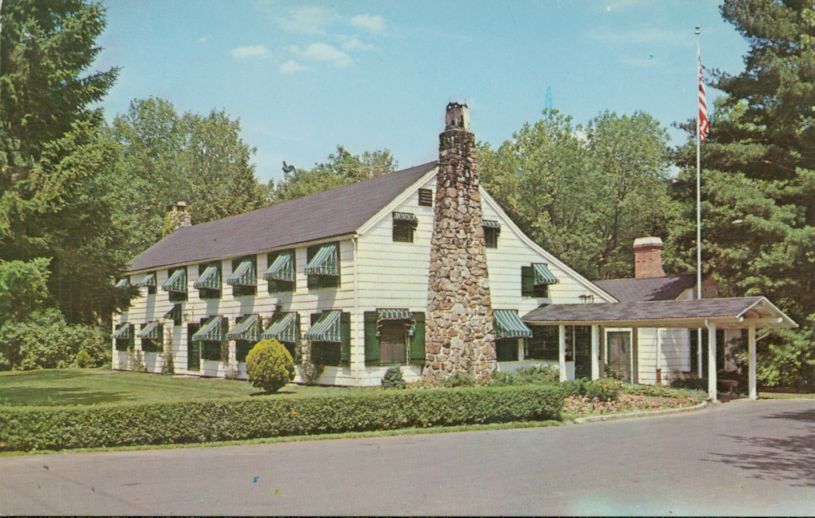
North Maple Avenue aka the Morristown “Highway”
Henry would next move to what was known as the Boudinot estate in 1782, renting the property for three years at $40/year as Boudinot had duties out of state. With over 100 acres, spreading from Maple Ave down through to the edges of the great swap where General William Alexander’s (Lord Stirling) property was just to the east and south, deed records show that Henry Southard finally purchased the farm and estate from Boudinot in 1785. Records show that Joseph Lewis, the Quartermaster at Morristown, NJ, issued certificates to Henry totaling $13,763.00 “for carting” as a “Wagoneer” during the war which would serve well to fund his purchase of the Boudinot estate in 1785.
Henry and his wife Sarah Morris Lewis Southard (6th child of Edward and Sarah Morris-Lewis), married Sarah when she was 15; Henry was 24. Henry lived in the house Sarah’s father Samuel built in 1762. They would have 13 children. Sadly, only six children lived past the age of eleven. Their children were; Joseph Southard; Lewis Southard; Lot Southard; Daniel Southard; Stephen Southard; James Southard; Isaac Southard; Elizabeth Southard; Samuel L. Southard, ; Joseph Lewis Southard; Elais Southard; Sarah Doty and Finley Southard.
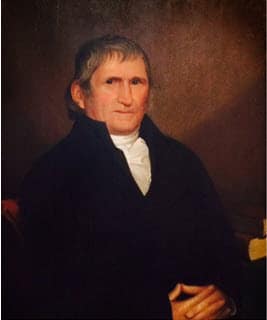
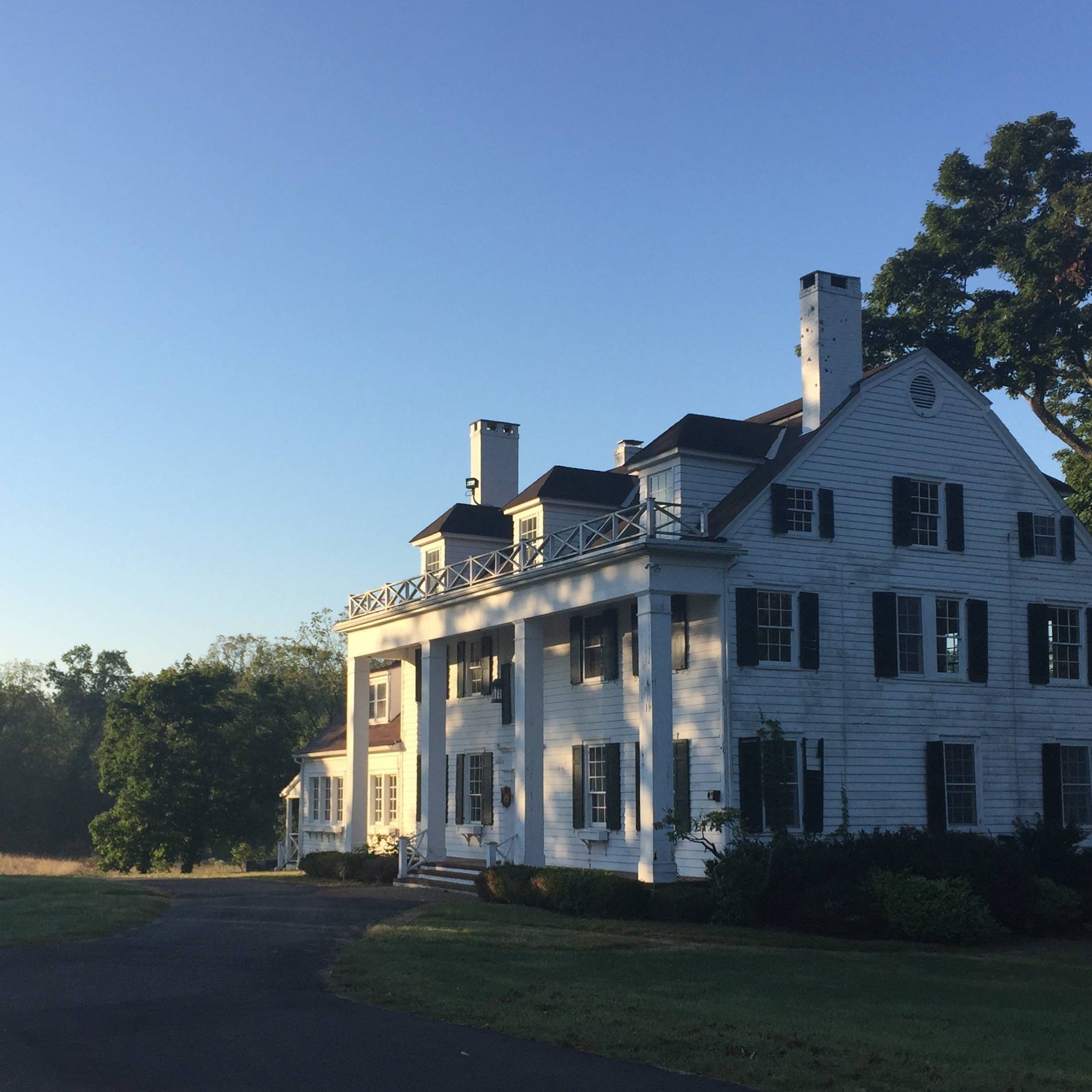
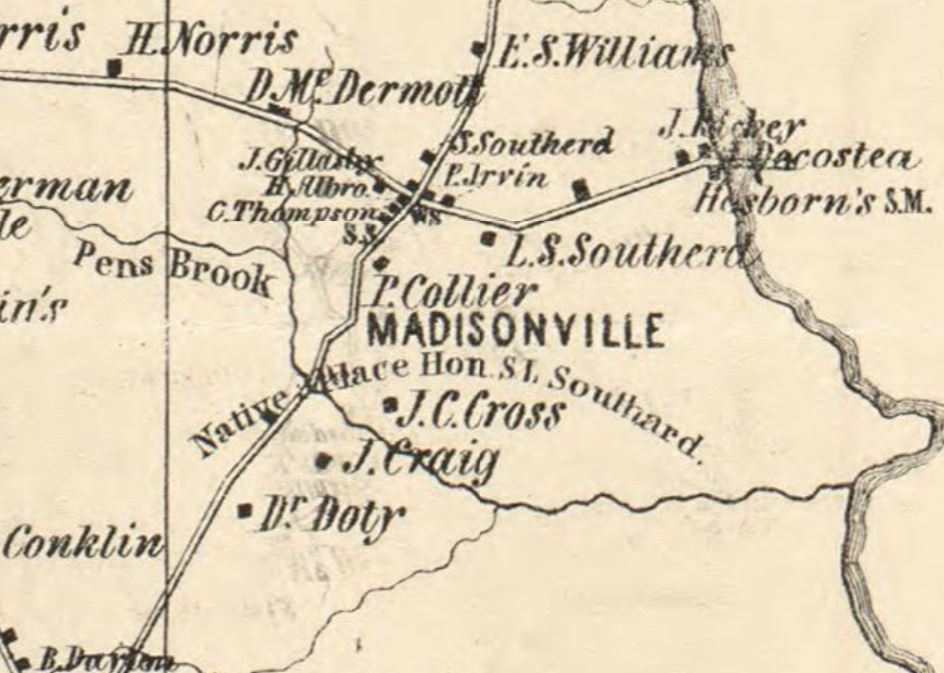
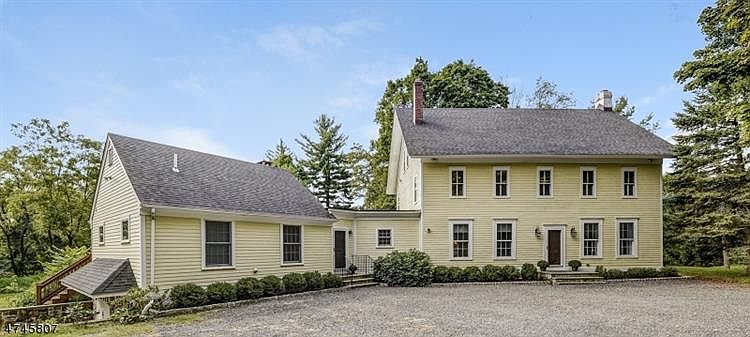
Henry Southard died May 22, 1842, aged ninety-five. He retained an unusual amount of vigor, and within three years of his death, he never
wore glasses or used a cane. The room where he died is nearly the same as when he occupied it; indeed the mansion, which is a noble, old-style,
country house, has undergone few alterations, except that a wing has been added, and the whole is kept in excellent repair. The property is now
owned by Albert Albro, Esq., of New York, whose wife is connected with the Southard family.
Somerset County Historic Quarterly – Vol.3
Documents from the 1830 and 1840 US Census show that after selling the farm in 1818, Henry and Sarah Southard moved in with their daughter Sarah Southard Doty and her family in Basking Ridge. They are listed immediately adjacent to the owners of the BSR property (Darcy in 1830. Dowden in 1840), indicating that their property is “next door.” In 1840, Henry lived in his daughter’s home just south of the Southard mansion (see above).
Henry would die on May 22, 1842, at the age of 94. He rests in the Basking Ridge Presbyterian church graveyard where today’s Westminster Hall sits. His grave would be relocated. His wife Sarah Lewis Southard passed on January 6, 1831 (aged 74/75) and rests with him. Sadly, Henry’s son Samuel would die in the same year on June 26, 1842, in Fredericksburg, Virginia just 31 days after his father. Samuel was just 55.
Henry’s will 2835 R (Trenton) left to his daughter, Sarah Southard Doty, “the house in which I now live and the land — located on the east side of the road between Morristown and the Basking Ridge meeting house in the Great Swamp.” According to the Presbyterian Church’s church records, on Nov 4, 1810, a child named Diana was baptized and listed as a black child of the H. Southard family, indicating that Henry Southard had slaves or servants.
“In memory of Hon. Henry Southard who departed this life in the hope of a glorious immortality May 22, 1842 in the 95th year of his age. For 70 years he was a professed disciple of Christ and filled the office of ruling elder in the Presbyterian Church at Basking Ridge for upwards of 50 years with wisdom. He served his country during the war of the Revolution and in a civil capacity as Justice of the Peace, Judge of the Court and in the Legislative Councils of the State and Nation until beyond the age of three score and ten when he voluntarily retired from public life and maintained good profession in Holy conservation and Godliness. On such Thy second death hath no power.“
Epitaph – Henry Southard
Isaac Southard – New Jersey Congressman
Isaac Southard was the 7th of 13 children of Henry and Sarah Southard and was born in Basking Ridge, New Jersey on August 30, 1783. Isaac attended the Classical School at the Brick Academy in Basking Ridge. Husband of Mary Wright (Doty) Southard, daughter of Daniel W. Doty Sr. and Elizabeth Budd Doty, married 13 Jan 1807 in the Presbyterian Church in Basking Ridge. He would then go on to work for Doty & Southard, the family business.
After college, Isaac became an anti-Jacksonian member of the United States House of Representatives from 1831 to 1833, representing New Jersey. In 1831, he was elected as an Anti-Jacksonian to the Twenty-second Congress, serving until 1833. An unsuccessful candidate for reelection, he was appointed a master and examiner in chancery by Governor Elias P. Seeley, in 1833, served as Colonel in the New Jersey State Militia and was the New Jersey State Treasurer (1837-43). U.S. Senator, New Jersey Governor, and a Presidential Cabinet Member. As State Treasurer, Southard lived in Trenton, NJ for several years before moving to Somerville, New Jersey, where he lived until his death on September 18, 1850. He was buried in the Old Somerville Cemetery.
The Honorable Samuel Lewis Southard – Statesman, US Senator, Secretary of the Navy, and Vice President?
Born in Basking Ridge on June 9, 1787, the 9th of 13, Samuel was born to Henry and Sarah Southard two years after moving into the Boudinot estate up the road. Younger than Isaac by 4 years, at age 12, he attended the classical school at the Brick Academy under the direction of Reverend Robert Finley. Samuel then went on to college at Princeton University and graduated at the age of 17.
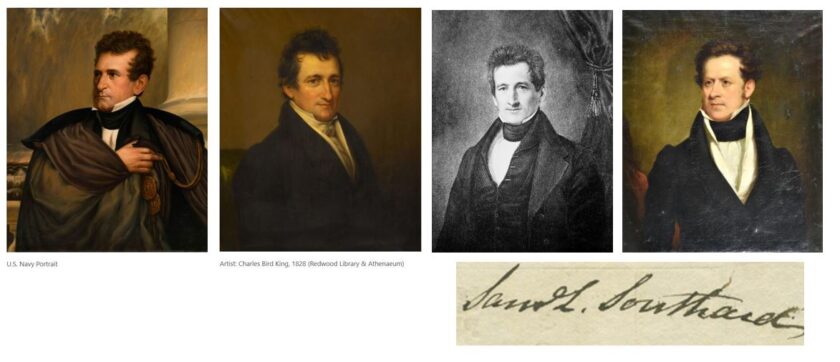
Samuel passed the bar in Hunterdon County while living in Flemington. Samuel’s lifetime accomplishments included being the 8th Secretary of the Navy, President Monroe and John Quincy Adam’s cabinet, New Jersey Attorney General, US Secretary of the Treasury, Secretary of War, Elected Governor over Peter D. Vroom by a vote of 40 to 24 by the joint session of the Legislature in 1832, he re-entered the U.S. Senate the following year. The destroyer USS Southard (DD-207), (later DMS-10), 1919–1946, was named in his honor.
1823 – President James Monroe is seen discussing with his advisors the policy later known as the Monroe Doctrine. From left to right, they are Secretary of State John Quincy Adams, Secretary of the Treasury William H. Crawford, Attorney General William Wirt, President Monroe (standing), Secretary of War John C. Calhoun, Secretary of the Navy Samuel Southard, and Postmaster General John McLean.
Source: Monroe Michigan
Around the same time that William Henry Harrison became President in 1841, Senator Southard was elected President “pro-tempore” (acting) of the Senate and was serving as such when, only a month after the inauguration on April 4, 1841, Harrison died of what was thought to be pneumonia. President Henry Harrison’s vice president, John Tyler, would immediately face a daunting task. The Constitution was very unclear about the concept of presidential succession. Tyler didn’t want to take the presidential oath, believing that his vice presidential oath covered the eventuality of his ascension to the presidency. His cabinet and many other officials disagreed, and Tyler took the oath in public on April 6, 1841, thus making Southard the new Vice President. Southard’s service as acting Vice President would last 422 days.
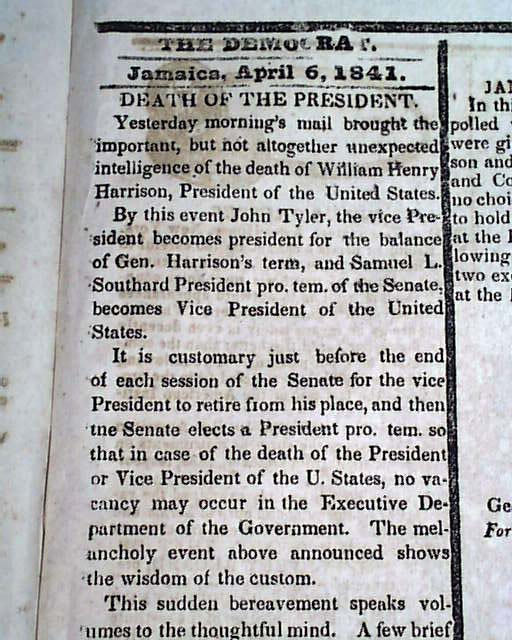
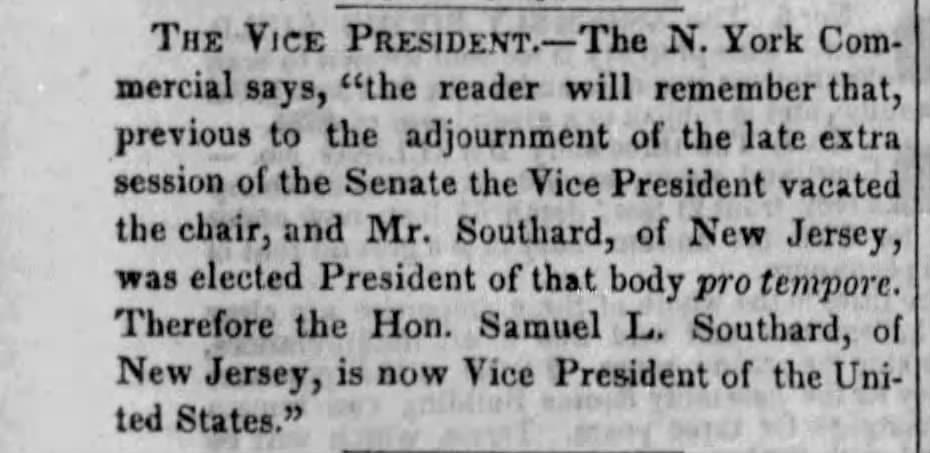
Whitehouse – President William Henry Harrison was the ninth President of the United States (1841), the oldest President to be elected at the time. On his 32nd day, he became the first President to die in office, serving the shortest tenure in U.S. and with him died the Whig program.
“As President presiding over the Senate of the United States, Samuel Lewis Southard of Basking Ridge, New Jersey became acting Vice President (called Pro-Tempore) from April 4, 1841 to May 31, 1842 after the death of President William Henry Harrison as Vice President John Tyler became President.”
Whitehouse.gov
Act of 1792
The Presidential Succession Act of 1792 provided for succession after the president and vice president: first, the president pro tempore of the Senate, followed by the speaker of the House.
We believe that Samuel Southard was the Vice President of the United States on April 4, 1841, after the death of President William Henry Harrison, the ninth President of the United States. MLHP
The U.S. Constitution and the Presidential Succession Act of 1947 outline the presidential order of succession. Cabinet officers’ succession is in the order in which their agencies were created.
- Vice President
- Speaker of the House
- President Pro Tempore of the Senate
- Secretary of State
Presidential succession is referred to multiple times in the U.S. Constitution: Article II, Section 1, Clause 6, the 12th Amendment, 20th Amendment, and 25th Amendment. The vice president is designated as first in the presidential line of succession by the Article II succession clause, which also authorizes Congress to provide for a line of succession beyond the vice president. It has done so on three occasions. The Presidential Succession Act was adopted in 1947, and last revised in 2006. The 25th Amendment also establishes procedures for filling an intra-term vacancy in the office of the vice president.
Samuel’s Health
Samuel was also in poor health and on May 3, 1841, about a month after President Harrison’s death, he resigned from the Senate in 1842. A few weeks later. in June, he (presumably his wife, Rebecca) went to Fredericksburg J Va, , to visit- his wife’s relatives, the Harrows. While mere Senator Southard was honored by “a hansom stag dinner.” During the meal “he was seized with apoplexy, and died shortly afterward”.
Failing health forced Southard to resign from the Senate. Funny as it happened, the next Senator taking Samuel’s seat, appointed by New Jersey Governor William Pennington, was William H. Dayton, also from Basking Ridge. Southard died in Fredericksburg, Virginia, on June 26, 1842,, at the age of 55. Samuel Southard was buried in Washington, D.C.’s Congressional Cemetery.
Former President John Quincy Adams added his own words of praise. Adams observed that Southard had proved himself a man of high caliber in six years as a colleague in the executive branch.
The soundness of his judgement, the candor of his disposition, the sweetness of his temper , and the firmness of his adherence to his own sense of right were, to me , as a colleague, and a confidential assistant and advisor, a treasure beyond all price.
Former President John Quincy Adams – Congressional Globe – 27th Congress
Timeline
- Born in Basking Ridge, Somerset County, N.J., June 9, 1787
- Member of New Jersey State House of Assembly, 1815;
- Associate Justice of New Jersey state supreme court, 1815-20;
- Presidential Elector for New Jersey, 1820;
- U.S. Senator from New Jersey, 1821-23, 1833-42; died in office 1842;
- U.S. Secretary of the Navy, 1823-29; New Jersey State Attorney General, 1829-33;
- Governor of New Jersey, 1832-33.
- Vice President of the United States, April 4, 1841 to May 31, 1842
- Senate Years of Service: 1821-1823; 1833-1837; 1837-1842
- Died in Fredericksburg, Va., June 26, 1842. Interment at Congressional Cemetery, Washington, D.C.
- Party: Republican; Anti-Jackson; Whig
Born and educated in Basking Ridge, Samuel Lewis Southard deserves to be recognized as Basking Ridge’s prodigal son!
The Mr. Local History Project
Richard Southard
Henry Southard’s other son Richard had a daughter Phoebe Southard who would marry Samuel Woodward who is noted for rebuilding Franklin Corners Old Mill which was later sold after Samuel’s death in 1841, to the Van Dorn family. After that, William Childs purchased the property, which we know as the Franklin Corners section of Bernards Township.
Related MLHP Research

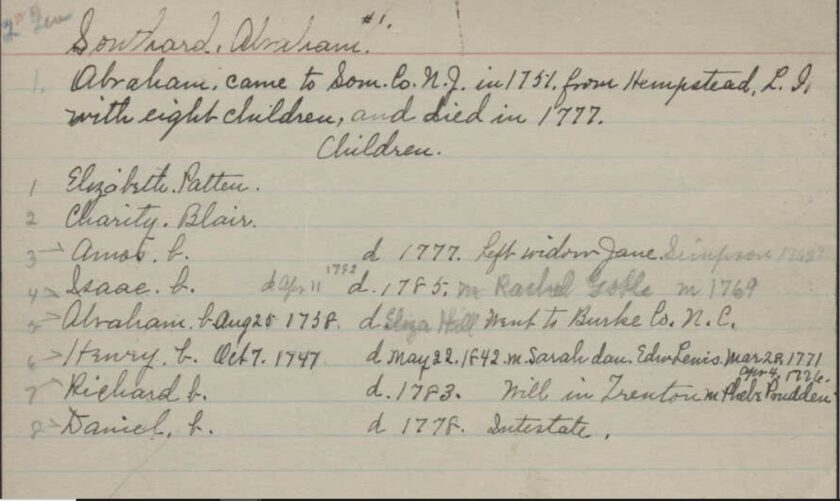
Southard Park Plaque Transcript
SOUTHARD PARK
HENRY SOUTHARD
1747 – 1842
SETTLED IN BASKING RIDGE, 1755. JUSTICE OF THE PEACE, ASSEMBLYMAN, U.S. REPRESENTATIVE
SAMUEL SOUTHARD
1787-1842
SON OF HENRY, BORN IN BASKING RIDGE, TENTH GOVERNOR OF NEW JERSEY, SECRETARY OF THE NAVY, U.S. SENATOR, FATHER AND SON SERVED TOGETHER IN THE 16TH CONGRESS
THE FORMER SOUTHARD RESIDENCE STANDS TO THE NORTH OF THE PARK
10 ACRES OF THESE LANDS WERE THE GIFT OF
NELSON AND ROSE SCHAENEN
DEDICATED JULY 4TH IN THE YEAR OF NEW JERSEY’S TERCENTENARY
1964
Footnote: According to local Alan Bush, he and his grandfather Boyd Happe installed the plaque in 1964. Research is also indicating that Henry and his parents and family were in the area as early as 1750.
